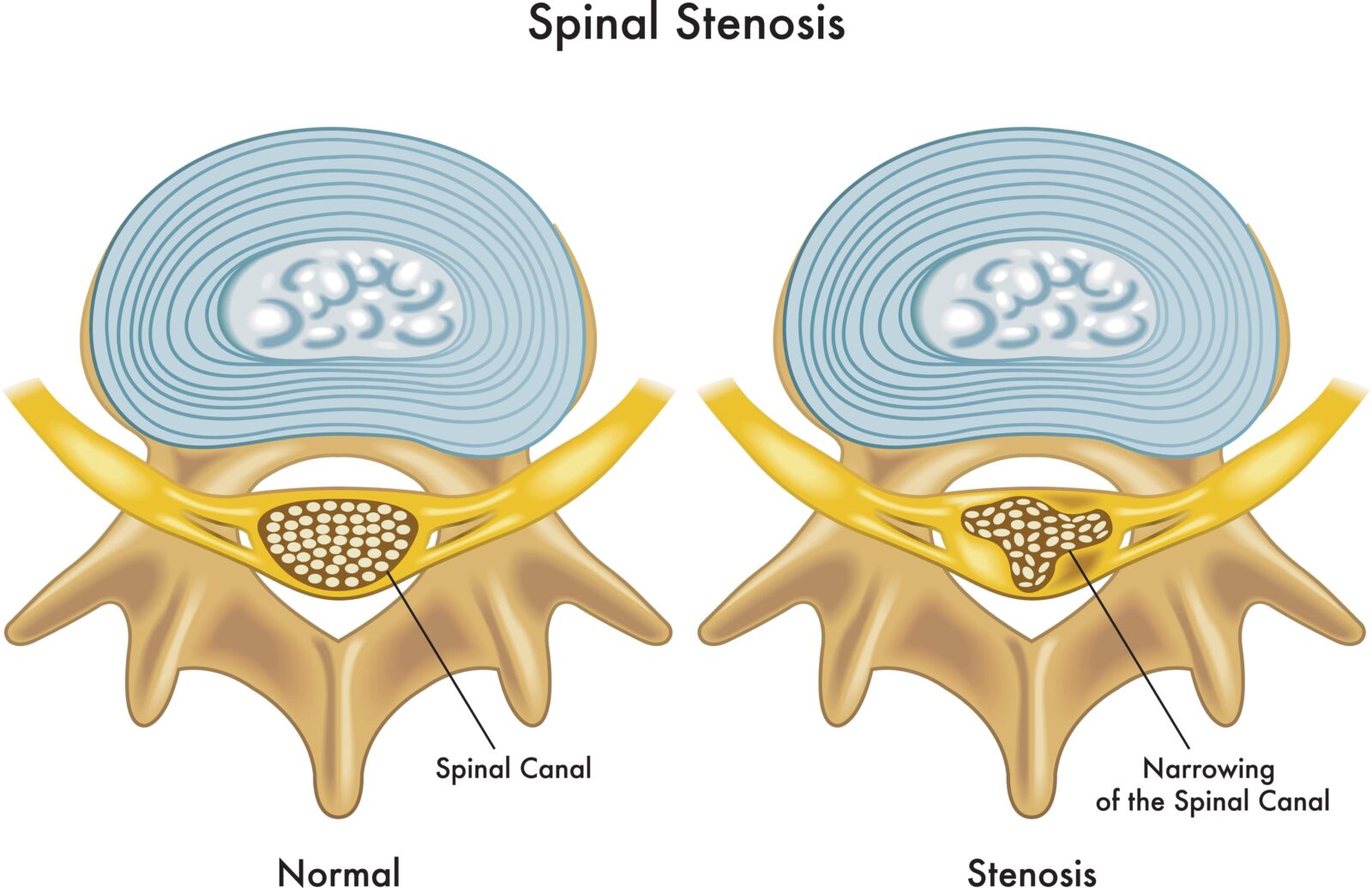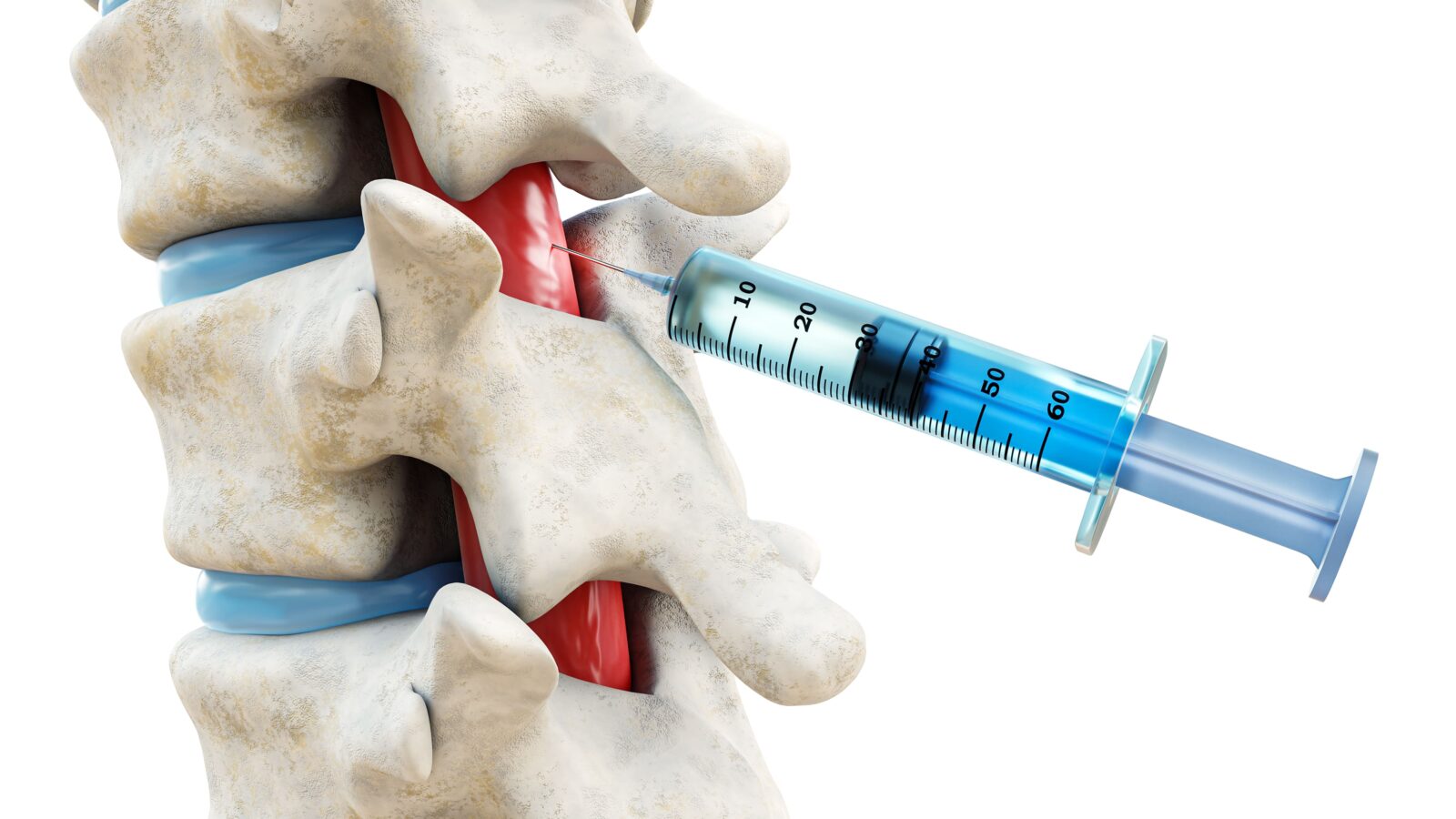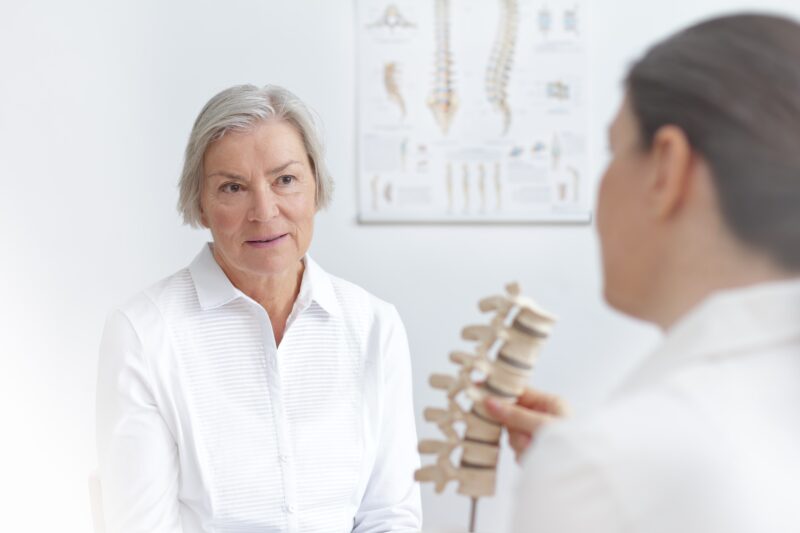Spinal stenosis, a condition characterized by the narrowing of spaces within the spine, can lead to significant discomfort and mobility issues, particularly in older adults. This blog post will delve into the nuances of spinal stenosis, focusing on its symptoms, underlying causes, and the non-surgical treatments available to manage this often debilitating condition. Whether you are personally affected or caring for someone with spinal stenosis, understanding these aspects is crucial for effective management and maintaining quality of life. By exploring non-surgical options ranging from physical therapy to lifestyle modifications, we aim to equip you with the knowledge needed to navigate this condition more effectively.
In This Blog:
- What is Spinal Stenosis?
- Symptoms of Spinal Stenosis
- Causes and Prevention of Spinal Stenosis
- Non-Surgical Treatments for Spinal Stenosis
- When to Consider Surgery
What is Spinal Stenosis?

Spinal stenosis is a medical condition where the spaces within your spine narrow, which can put pressure on the nerves that travel through the spine. This pressure can cause pain, numbness, or other symptoms that can affect your quality of life. There are mainly two types of spinal stenosis: cervical and lumbar. Cervical stenosis occurs in the neck region and can affect both the arms and the legs, while lumbar stenosis, which is more common, affects the lower back and typically influences the legs.
This condition primarily affects adults over the age of 50, although younger people may also develop spinal stenosis due to congenital anomalies or injuries. According to statistics, spinal stenosis is a leading cause of back pain in adults older than 65 and is becoming more prevalent as the population ages.
Understanding the types of spinal stenosis and recognizing its presence in different demographic groups is essential for early diagnosis and treatment. The impact of spinal stenosis on mobility and daily activities can be substantial, making awareness and education crucial for those affected by or at risk of developing this condition.
Symptoms of Spinal Stenosis
The symptoms of spinal stenosis can vary widely depending on the type and severity of the narrowing within the spine. However, certain common symptoms are frequently associated with this condition:
- Pain in the Back or Neck: For lumbar stenosis, pain is typically felt in the lower back, whereas cervical stenosis often results in neck pain. This pain can be intermittent or chronic, worsening with activities like walking or standing for long periods.
- Numbness or Tingling: Many people with spinal stenosis experience numbness, tingling, or a “pins and needles” sensation in their arms or legs, depending on the location of the stenosis. This is due to pressure on the nerve roots.
- Muscle Weakness: As nerves are compressed, it can lead to muscle weakness in the extremities, affecting balance and walking. In severe cases, this can lead to difficulties in performing daily tasks and increase the risk of falls.
- Problems with Walking or Balance: Particularly in lumbar stenosis, individuals might notice a claudication phenomenon where walking exacerbates symptoms, and resting alleviates them. This often forces people to take frequent breaks or lean forward while walking to relieve symptoms.
The progression of these symptoms usually increases gradually, and they can significantly impact daily life and mobility. Cervical spinal stenosis can also lead to more severe symptoms, including major body weakness or even paralysis in extreme cases. It is vital for individuals experiencing such symptoms to seek medical evaluation promptly to avoid further nerve damage and deteriorating quality of life.
Causes and Prevention of Spinal Stenosis
Spinal stenosis can result from a variety of factors, some preventable and others not. Understanding these causes can help in managing risk factors and possibly delaying or preventing the onset of spinal stenosis symptoms.
Causes of Spinal Stenosis
- Aging: As we age, the body’s natural wear and tear affect the spine. Degenerative changes such as the thickening of ligaments, herniation of discs, and formation of bone spurs can narrow the spinal canal, leading to stenosis. These changes are the most common causes of spinal stenosis.
- Congenital Factors: Some individuals are born with a narrower spinal canal, which predisposes them to develop symptoms of stenosis earlier in life, especially if other degenerative changes occur.
- Past Injuries or Surgeries: Accidents or trauma that cause dislocations or fractures of the vertebrae can damage the spinal canal. Additionally, surgeries on the spine may lead to scar tissue that puts pressure on the spinal cord or nerves.
- Other Medical Conditions: Diseases such as osteoarthritis, rheumatoid arthritis, and Paget’s disease of bone can contribute to the development of spinal stenosis through joint degeneration and bone deformation.
Prevention Strategies
While not all causes of spinal stenosis can be prevented, particularly genetic factors, there are steps you can take to reduce your risk or delay the progression of symptoms:
- Maintain a Healthy Weight: Excess body weight puts additional stress on the spine and can accelerate degenerative changes. Managing your weight through diet and exercise can help alleviate this pressure.
- Regular Exercise: Engaging in regular physical activity can strengthen the muscles around the spine, improve flexibility, and reduce the likelihood of injuries. Focus on low-impact exercises like swimming or cycling, which are easier on the back.
- Proper Posture: Maintaining good posture reduces stress on the spine and helps prevent the excessive strain that can lead to spinal problems. Be mindful of your posture when sitting, standing, and lifting objects.
- Ergonomic Work Environment: Set up your work area to support your back properly, especially if you spend long hours at a desk. Ergonomic chairs, standing desks, and keyboard trays can make a significant difference.
- Regular Check-Ups: Regular visits to a healthcare provider can help catch spinal issues before they become severe. Early intervention can be key in managing conditions that contribute to spinal stenosis.
By understanding the causes and taking proactive measures for prevention, individuals can better manage their spinal health and potentially reduce the impact of spinal stenosis on their lives.
Non-Surgical Treatments for Spinal Stenosis
Non-surgical treatment options are often the first line of intervention for managing spinal stenosis. These approaches focus on relieving symptoms and improving quality of life without the need for surgery. Here are some commonly recommended non-surgical treatments:
Physical Therapy
Physical therapy is pivotal in treating spinal stenosis. A tailored exercise program helps strengthen back and abdominal muscles, enhancing support for the spine. Physical therapists also teach patients stretching exercises to maintain flexibility in the spine and reduce pressure on the nerves.
Medications
Several types of medications may be used to manage pain and inflammation associated with spinal stenosis:
- Anti-inflammatory drugs: Over-the-counter (OTC) or prescription non-steroidal anti-inflammatory drugs (NSAIDs) can help reduce inflammation and relieve pain.
- Analgesics: For more severe pain, stronger pain relievers may be prescribed.
- Anticonvulsants: These are used to treat nerve pain.

Corticosteroid Injections
Injections of corticosteroids can be administered directly into the affected area to reduce inflammation and pain. These are generally considered when other medications do not provide adequate relief.
Lifestyle Modifications
Making lifestyle changes can also play a crucial role in managing spinal stenosis:
- Weight management: Maintaining a healthy weight can help reduce the burden on the spine and alleviate symptoms.
- Diet: Eating a balanced diet rich in anti-inflammatory foods can potentially help reduce inflammation.
Alternative Therapies
Some patients find relief through alternative therapies such as:
- Acupuncture: This can help relieve pain by altering body pain chemistry.
- Chiropractic care: Adjustments might help improve spinal alignment and reduce nerve irritation.
- Massage therapy: Helps in relaxing tight muscles and improving circulation.
When to Consider Surgery
While non-surgical treatments can be effective, they do not always halt the progression of spinal stenosis. Surgery might be considered in the following scenarios:
- Persistent pain: If chronic pain does not respond to non-surgical treatments and significantly impairs quality of life.
- Neurological symptoms: If there are signs of nerve damage, such as increasing weakness or numbness, or loss of bladder or bowel control.
- Severe functional disabilities: If the stenosis severely affects the ability to perform everyday activities.
Deciding on surgery involves careful consideration of potential benefits and risks. It is typically reserved for cases where the structural issues in the spine need correction to relieve nerve pressure and improve function. Consulting with a spine specialist can provide guidance based on individual circumstances and the severity of the condition.
Conclusion
In conclusion, understanding spinal stenosis is essential for managing its impact effectively. By recognizing the early signs and symptoms, addressing the underlying causes, and exploring a range of non-surgical treatments, individuals can significantly enhance their quality of life and mobility. While non-surgical methods often provide relief, it’s important to monitor symptoms closely and consult with healthcare professionals to determine if more aggressive treatments, like surgery, are needed. Remember, each person’s journey with spinal stenosis is unique, and maintaining an open dialogue with your healthcare provider is crucial to tailor a treatment plan that best suits your needs.










